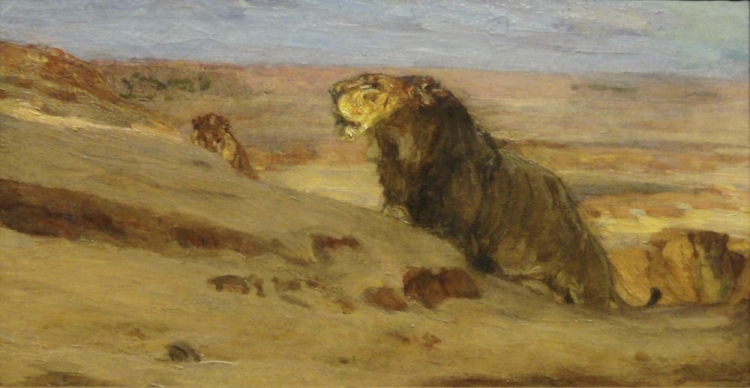Welcome to Part 2 of our three-part series about the Extraordinary Tanners. Today’s post centers on Henry and Carlton Tanner, sons of Benjamin and Sarah Tanner. We’ll meet younger son, Carlton, first. Though he wasn’t technically born in Appalachia, his parents were, and his story is significant to present the lives and talents of this incredible family as a whole. Second, we’ll discover Henry Ossawa Tanner, celebrated and revered artist. And now . . . introducing . . .
Carlton Miller Tanner
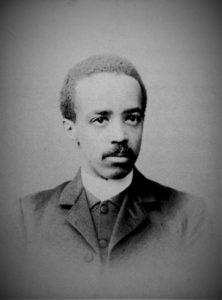
Carlton “Carlie” Miller Tanner was born on October 18, 1869 in Philadelphia, Pennsylvania.1) United States of America. “Application for Passport.” Family Search. Sept 29, 1902. He married Frances S. Stanford on September 4, 1896,2)Pennsylvania Marriage Records. Family Search. Sept 4, 1896. and, according to the 1910 census,3)Department of Commerce and Labor – Bureau of the Census . “United States Census.” Family Search. Apr 29, 1910. the couple had at least one child, a daughter named Sarah E. Tanner. He graduated from the Institute for Colored Youth and also attended Philadelphia’s Episcopal Divinity School.”4)Mathews, Marcia M. Henry Ossawa Tanner: American Artist. Chicago: University of Chicago Press, 1969. p. 133
He followed his father’s footsteps and became a clergyman, serving across the United States. He also traveled the world as a minister and once worked in South Africa “as a managing editor of the South African Christian Recorder.” He was an author who wrote “a number of books on the history and polity of his church.”5)Mosby, Dewey F. Henry Ossawa Tanner. Philadelphia: Rizzoli, 1991. p. 31 One of those books, Manual for Probationers and Members for the African Methodist Episcopal (A.M.E.) Church can be read on Hathi Trust. His love and loyalty to his parents shine through the book’s dedication: “Dedicated to my father and mother with unfeigned love and the fervent prayer that the blessing of life, health and happiness may be theirs for many years.”
Finding information on Carlton proved somewhat difficult. But I did locate letters posted on Smithsonian’s website that the Tanner family wrote to Henry. The letters from their sister, Mary Louise Tanner Mossell, offer snippets of Carlton’s life. In a 1919 letter, she discusses Carlie’s bright prospects in the ministry, saying he “has had wonderful success since he has been at Metropolitan Church.”6)Tanner, Mary. “Smithsonian Institution Transcription Center – Henry Ossawa Tanner Correspondence with Tanner Family, 1910-1937.” Smithsonian. Mar 5, 1919. The years must have taken their toll on Carlton, however, because in a 1929 letter, Mary reveals their brother’s physical decline. The letter also provides a glimpse into Carlton’s overwhelming feelings of disappointment and failure, saying, “his wife says he has worried so much over his failure to reach the things in the Church that he was aiming for and the general treatment he has received. She says he is very morose.”7)Tanner, Smithsonian Institution Transcription Center – Henry Ossawa Tanner Correspondence with Tanner Family, 1910-1937 1929 In a letter dated April 14, 1930, Mary writes that Carlie “has high blood pressure and some Kidney trouble.”8)Tanner, Smithsonian Institution Transcription Center – Henry Ossawa Tanner Correspondence with Tanner Family, 1910-1937 1930 Two years later, in 1932, Mary writes that Carlton had been bedridden for six months with “one side paralyzed.” She laments his family’s financial situation, saying “they have had to struggle for unfortunately the Church makes very small, if any provision for those who cannot work.”9)Tanner, Smithsonian Institution Transcription Center – Henry Ossawa Tanner Correspondence with Tanner Family, 1910-1937 1932 Carlton Miller Tanner died, less than one year later, on November 3, 1933.
![]()
Henry Ossawa Tanner
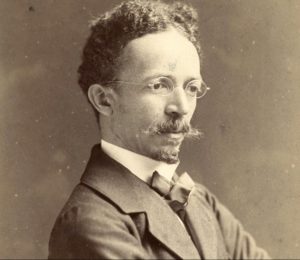
Henry Ossawa Tanner was born June 21, 1859 in Pittsburgh, Pennsylvania. He was the first African American artist to be recognized internationally. His father named him Ossawa to honor Abolitionist John “Osawatomie” Brown, “a hero, patriot and Christian”10)Mosby, Dewey F. Henry Ossawa Tanner. Philadelphia: Rizzoli, 1991. p. 58 who fought in the bloody Battle of Osawatomie between pro and anti slavery groups in Kansas.
Henry began his journey into fine arts when he was thirteen years old. He and his father took a walk in Fairmont Park and Henry noticed an artist painting. He “watched for an hour and decided on the spot to become an artist.”11)Mosby, Dewey F. Henry Ossawa Tanner. Philadelphia: Rizzoli, 1991. p. 56 Henry said on that day in Fountain Park, he “embarked upon a course of self-training as a landscape painter”12)Mosby, Dewey F. Henry Ossawa Tanner. Philadelphia: Rizzoli, 1991. p. 56 He further added: “I went straight to the spot where I had seen the artist the day before . . . Whether I got the most paint upon the canvas, upon myself, or upon the ground, it would be hard to tell. But I was happy, supremely so, there can be no doubt.”13)Mosby, Dewey F. Henry Ossawa Tanner. Philadelphia: Rizzoli, 1991. p. 56
Henry excelled in his studies, graduating as valedictorian in the Robert Vaux School, one of the few schools with a liberal arts program for African Americans.14)www.esperstamps.org. “Henry Ossawa Tanner.” Find a Grave. Jun 6, 2009. His attempts to find a teacher afterward were met with a wall of racism. Henry said of this time:
No man or boy to whom this country is a land of ‘equal chances’ can realize what heartaches this question caused me, and with what trepidation and nervousness I made the round of the studios. The question was not, would the teacher have a boy who knew nothing and had little money, but would he have someone like me, or would he keep me after he found out who I was?15)Mosby, Dewey F. Henry Ossawa Tanner. Philadelphia: Rizzoli, 1991. p. 57
Finally, Isaac L. Williams tutored him for two dollars a session. Henry applied to the Pennsylvania Academy of Fine Arts and was accepted in 1880, though not without controversy. He was the only African American student, taught by Thomas Eakins.16)Eakins was a progressive at the time. Henry became one of his favorite students. Eakins was in many ways a first – he encouraged students to use new methods for understanding the human body – live models and even cadavers, for example Eakins was impressed with Henry and admired the young man, but that didn’t mean the students shared the same opinion.
One student, future illustrator Joseph Parnell, who was “a self-described ‘conceited prig’ and an overt racist,”17)Mosby, Dewey F. Henry Ossawa Tanner. Philadelphia: Rizzoli, 1991. p. 59 said of Tanner: “He came, he was young, an octoroon, very well dressed, far better than most of us . . . He worked at night in the Antique, and last of all, he drew very well . . . He was quiet and modest, and he ‘painted too,’ it seemed . . .”18)Mosby, Dewey F. Henry Ossawa Tanner. Philadelphia: Rizzoli, 1991. p. 59 Parnell further opined: “Curiously, there never has been a great Negro or Jew artist in the history of the world.”19)Mosby, Dewey F. Henry Ossawa Tanner. Philadelphia: Rizzoli, 1991. p. 60
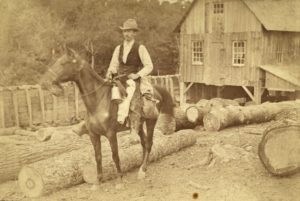
At first, Henry’s paintings garnered little money and several buyers even chiseled him. He sold one painting “after no little difficulty . . . for $15 [and the buyer] later resold it for $250.”20)Bullock, Ralph W. “Henry Ossawa Tanner.” In In Spite of Handicaps, 91-95. New York: Association Press, 1927. A little success came his way in the 1880s when he was hired to illustrate for Our Continent and Harper’s Young People .21)Mosby, Dewey F. Henry Ossawa Tanner. Philadelphia: Rizzoli, 1991. p. 62
He moved to Georgia and taught at Clark College (now Clark Atlanta University) from 1889-1891.22)BY-SA, CC. “Henry Ossawa Tanner.” Search Alchetron. Feb 19, 2018. While in Atlanta, he met Bishop and Mrs. Joseph Crane Hartzell, and the couple became his “white patrons over the next several years.”23)White House Executive Office of the President, First Lady Hillary Clinton. “Henry Ossawa Tanner 1859-1937.” Internet Archive Wayback Machine. Unknown. After a failed exhibition in Cincinnati, the Hartzells purchased all his paintings and he used the money earned to sail overseas.24)White House Executive Office of the President, First Lady Hillary Clinton. “Henry Ossawa Tanner 1859-1937.” Internet Archive Wayback Machine. Unknown.While in Europe, Henry met and fell in love with Jessie Olson, an opera singer from San Francisco, California, who was studying music in England. They married in London on December 14, 1899.25)www.esperstamps.org. “Henry Ossawa Tanner.” Find a Grave. Jun 6, 2009. The couple’s son, Jesse Ossawa Tanner, was born in 1903.
Of all the places Henry traveled, he liked France most because the country accepted and acknowledged African American talent and personhood. He eventually moved to Paris and spent the rest of his life there, visiting family on occasion in the States. Racism was the main reason for his move. Henry states:
I was extremely timid and to be made to feel that I was not wanted, although in a place where I had every right to be, even months afterwards caused me sometimes weeks of pain. Every time any one of these disagreeable incidents came into my mind, my heart sank, and I was anew tortured by the thought of what I had endured.26)BY-SA, CC. “Henry Ossawa Tanner.” Search Alchetron. Feb 19, 2018.
Racist incidents shadowed him for most of his life. He didn’t paint everyone with a broad stroke, however – no pun intended. In her book Henry Ossawa Tanner: American Artist, Marcia M. Mathews writes that Tanner “felt no animosity toward the white race – his dearest and closest friends were white people – but toward those individuals who blindly or cruelly inflicted pain and humiliation on others because of race or color.”27)Mathews p. 9
Tanner flourished in Paris. He attended the Académie Julian28)Unknown. “Henry Ossawa Tanner Biography.” The Famous People. Unknown. and studied under renowned artists Jean Joseph Benjamin Constant and Jean-Paul Laurens. 29)BY-SA, CC. “Henry Ossawa Tanner.” Search Alchetron. Feb 19, 2018. His artwork changed once he moved to France. In the States, his paintings displayed realism and depicted African Americans in a dignified manner.30)BY-SA, CC. “Henry Ossawa Tanner.” Search Alchetron. Feb 19, 2018. In The Banjo Lesson, for example, Henry’s work presents a more realistic side to African Americans, who were depicted in artwork as “minstrel-type” entertainers. Tanner “painted a sensitive reinterpretation.” Henry used shadowed blue colors near a warm, cozy light. Both teacher and student “are illuminated where the two light sources meet.”31)BY-SA, CC. “Henry Ossawa Tanner.” Search Alchetron. Feb 19, 2018.
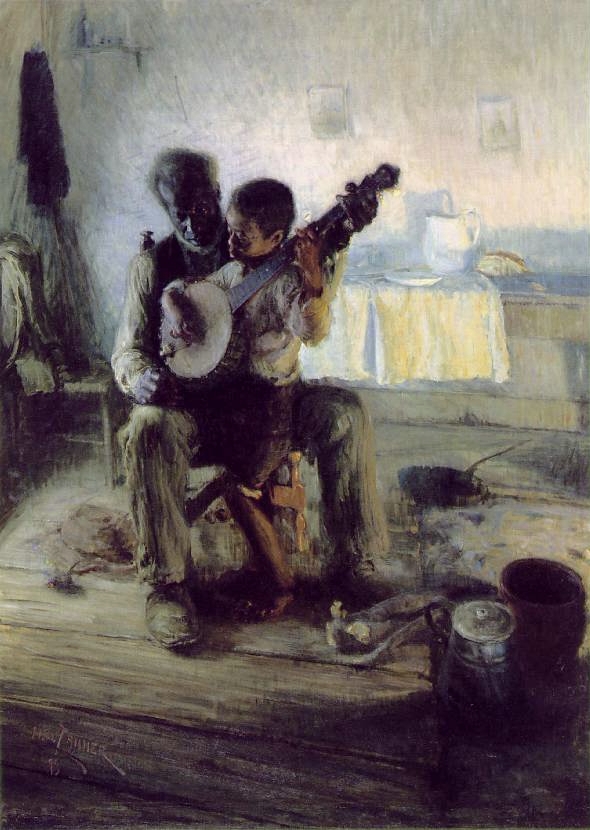
During his time in France, his paintings changed to religious and landscape themes incorporating various shades of brilliant and muted colors with bold usage of light and shadow. He pays “meticulous attention to detail in some paintings” and “loose, expressive brushstrokes in others,” often combining both approaches.32)BY-SA, CC. “Henry Ossawa Tanner.” Search Alchetron. Feb 19, 2018. His technique forms “a physical, almost tangible space and atmosphere while adding emotion and mood to the environment.”33)BY-SA, CC. “Henry Ossawa Tanner.” Search Alchetron. Feb 19, 2018. A wealthy merchant, Rodman Wanamaker funded Henry’s trips to Israel and places in the Middle East34)www.esperstamps.org. “Henry Ossawa Tanner.” Find a Grave. Jun 6, 2009. so he could further develop his religious paintings through authentic experiences.
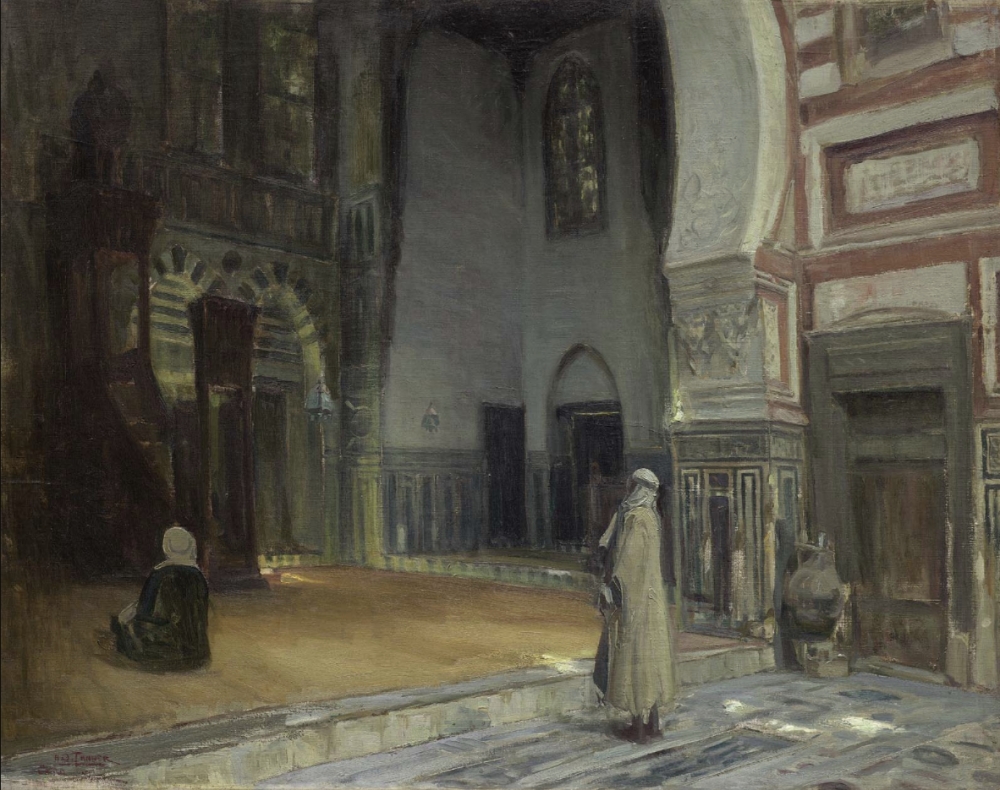
By taking a more critical look at a few more of Tanner’s paintings, one can see his extraordinary talent. His painting Daniel in the Lions’ Den won a silver medal at the Universal Exposition in Paris in 1900.35)White House Executive Office of the President, First Lady Hillary Clinton. “Henry Ossawa Tanner 1859-1937.” Internet Archive Wayback Machine. Unknown. Daniel’s biblical story embodies “some of the sentiments inherent in his African American scenes.”36)Mosby, Dewey F. Henry Ossawa Tanner. Philadelphia: Rizzoli, 1991. p. 93 The painting expresses “slavery, false accusations, execution, and martyrdom.”37)Mosby, Dewey F. Henry Ossawa Tanner. Philadelphia: Rizzoli, 1991. p. 94 Tanner said this painting’s recognition “gave me a courage and a power for hard work, and also a hope that I had never before possessed.”38)Mosby, Dewey F. Henry Ossawa Tanner. Philadelphia: Rizzoli, 1991. p. 95
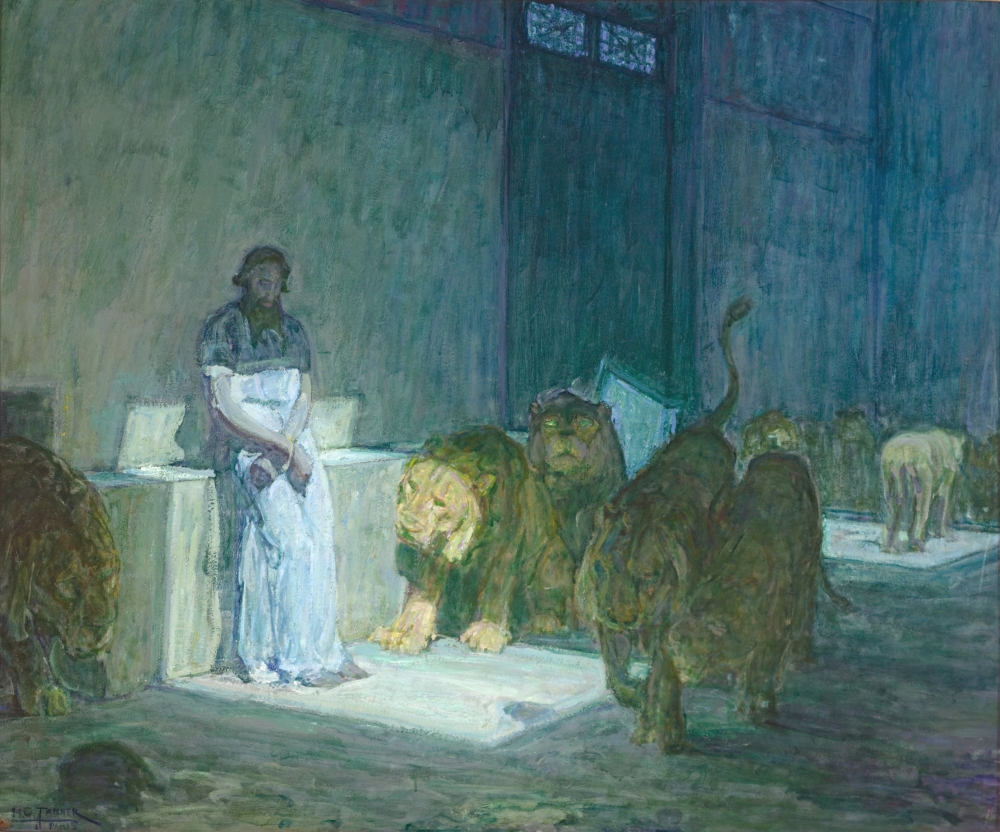
His painting The Ressurection of Lazarus won a medal at the Paris Salon and “established his reputation as an artist.”39)Mosby, Dewey F. Henry Ossawa Tanner. Philadelphia: Rizzoli, 1991. p. 135 The French government purchased40)Bullock, Ralph W. “Henry Ossawa Tanner.” In In Spite of Handicaps, 91-95. New York: Association Press, 1927. and exhibited it at the Louvre in 1897.41)www.esperstamps.org. “Henry Ossawa Tanner.” Find a Grave. Jun 6, 2009. A different Jesus is portrayed – one who is calm and present rather than distant and commanding.
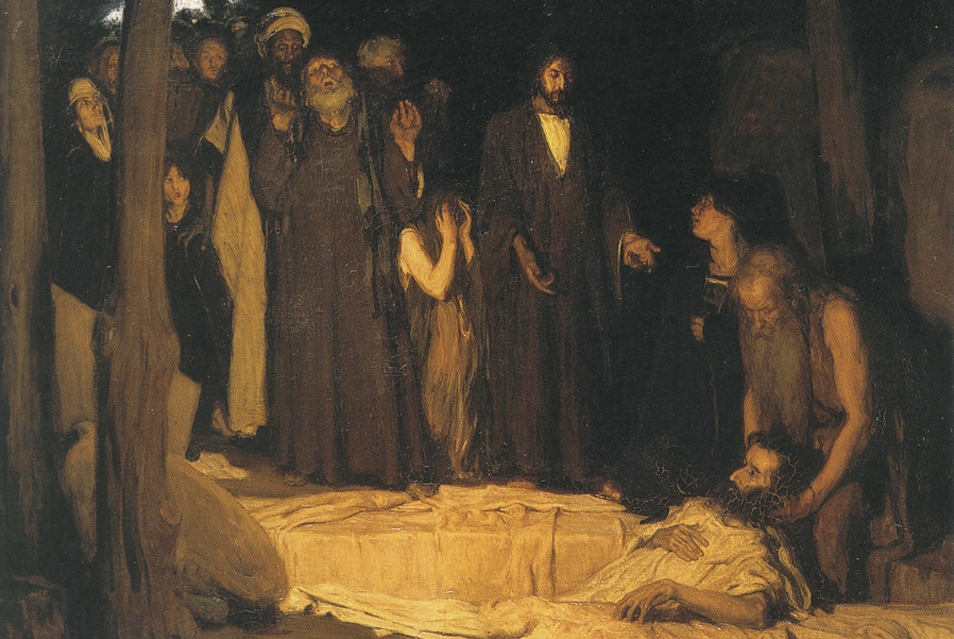
Tanner’s artwork increasingly won awards and recognition. The Annunciation was exhibited in Philadelphia’s Memorial Hall in Fairmont Park. Two Disciples at the Tomb won the Harris Award. Nicodemus Visiting Jesus was awarded the Lippincott Prize.42)Bullock, Ralph W. “Henry Ossawa Tanner.” In In Spite of Handicaps, 91-95. New York: Association Press, 1927. The French government purchased Disciples at Emmaus “for the Luxemburg where the finest of Europe’s treasures hang.”43)Bullock, Ralph W. “Henry Ossawa Tanner.” In In Spite of Handicaps, 91-95. New York: Association Press, 1927. In 1923, Tanner “was made an honorary chevalier of the Order of the Legion of Honor.”44)White House Executive Office of the President, First Lady Hillary Clinton. “Henry Ossawa Tanner 1859-1937.” Internet Archive Wayback Machine. Unknown. In 1927, he “became a full academician of the National Academy of Design, the first African American to receive that honor.”45)White House Executive Office of the President, First Lady Hillary Clinton. “Henry Ossawa Tanner 1859-1937.” Internet Archive Wayback Machine. Unknown.
Henry O. Tanner assisted in World War I efforts, too, working for the Red Cross. He sketched war scenes on the front lines, as close as Neufchateau.46)Bullock, Ralph W. “Henry Ossawa Tanner.” In In Spite of Handicaps, 91-95. New York: Association Press, 1927. He painted African American soldiers who served and it is worth following the Red Cross link to view these notable pieces. The work is “virtually the only paintings in the genre ever produced.”47)www.esperstamps.org. “Henry Ossawa Tanner.” Find a Grave. Jun 6, 2009.
So, Henry was a greatly talented man who made the world better with his creative genius and his service. His son, Jesse, says of his father’s paintings: “If you study them you keep discovering new things about them – a new form is revealed, a new star seems to shine, a new shadow stretches out – in a word, his pictures are very much alive.”48)Mathews, Marcia M. Henry Ossawa Tanner: American Artist. Chicago: University of Chicago Press, 1969. p. xii Henry Ossawa Tanner died in Paris, France, on May 25, 1937. He was seventy-seven years old.
Henry Ossawa Tanner – Small Gallery and Family Photos
Only known filming of Henry Ossawa Tanner.
(He enters at the 3:53 mark.)
**Featured Image Lions in the Desert by Henry O. Tanner circa 1890s – Wikimedia
References
| ↑1 | United States of America. “Application for Passport.” Family Search. Sept 29, 1902. |
|---|---|
| ↑2 | Pennsylvania Marriage Records. Family Search. Sept 4, 1896. |
| ↑3 | Department of Commerce and Labor – Bureau of the Census . “United States Census.” Family Search. Apr 29, 1910. |
| ↑4 | Mathews, Marcia M. Henry Ossawa Tanner: American Artist. Chicago: University of Chicago Press, 1969. p. 133 |
| ↑5 | Mosby, Dewey F. Henry Ossawa Tanner. Philadelphia: Rizzoli, 1991. p. 31 |
| ↑6 | Tanner, Mary. “Smithsonian Institution Transcription Center – Henry Ossawa Tanner Correspondence with Tanner Family, 1910-1937.” Smithsonian. Mar 5, 1919. |
| ↑7 | Tanner, Smithsonian Institution Transcription Center – Henry Ossawa Tanner Correspondence with Tanner Family, 1910-1937 1929 |
| ↑8 | Tanner, Smithsonian Institution Transcription Center – Henry Ossawa Tanner Correspondence with Tanner Family, 1910-1937 1930 |
| ↑9 | Tanner, Smithsonian Institution Transcription Center – Henry Ossawa Tanner Correspondence with Tanner Family, 1910-1937 1932 |
| ↑10 | Mosby, Dewey F. Henry Ossawa Tanner. Philadelphia: Rizzoli, 1991. p. 58 |
| ↑11, ↑12, ↑13 | Mosby, Dewey F. Henry Ossawa Tanner. Philadelphia: Rizzoli, 1991. p. 56 |
| ↑14, ↑25, ↑34, ↑41, ↑47 | www.esperstamps.org. “Henry Ossawa Tanner.” Find a Grave. Jun 6, 2009. |
| ↑15 | Mosby, Dewey F. Henry Ossawa Tanner. Philadelphia: Rizzoli, 1991. p. 57 |
| ↑16 | Eakins was a progressive at the time. Henry became one of his favorite students. Eakins was in many ways a first – he encouraged students to use new methods for understanding the human body – live models and even cadavers, for example |
| ↑17, ↑18 | Mosby, Dewey F. Henry Ossawa Tanner. Philadelphia: Rizzoli, 1991. p. 59 |
| ↑19 | Mosby, Dewey F. Henry Ossawa Tanner. Philadelphia: Rizzoli, 1991. p. 60 |
| ↑20 | Bullock, Ralph W. “Henry Ossawa Tanner.” In In Spite of Handicaps, 91-95. New York: Association Press, 1927. |
| ↑21 | Mosby, Dewey F. Henry Ossawa Tanner. Philadelphia: Rizzoli, 1991. p. 62 |
| ↑22, ↑26, ↑29, ↑30, ↑31, ↑32, ↑33 | BY-SA, CC. “Henry Ossawa Tanner.” Search Alchetron. Feb 19, 2018. |
| ↑23, ↑24, ↑35, ↑44, ↑45 | White House Executive Office of the President, First Lady Hillary Clinton. “Henry Ossawa Tanner 1859-1937.” Internet Archive Wayback Machine. Unknown. |
| ↑27 | Mathews p. 9 |
| ↑28 | Unknown. “Henry Ossawa Tanner Biography.” The Famous People. Unknown. |
| ↑36 | Mosby, Dewey F. Henry Ossawa Tanner. Philadelphia: Rizzoli, 1991. p. 93 |
| ↑37 | Mosby, Dewey F. Henry Ossawa Tanner. Philadelphia: Rizzoli, 1991. p. 94 |
| ↑38 | Mosby, Dewey F. Henry Ossawa Tanner. Philadelphia: Rizzoli, 1991. p. 95 |
| ↑39 | Mosby, Dewey F. Henry Ossawa Tanner. Philadelphia: Rizzoli, 1991. p. 135 |
| ↑40, ↑42, ↑43, ↑46 | Bullock, Ralph W. “Henry Ossawa Tanner.” In In Spite of Handicaps, 91-95. New York: Association Press, 1927. |
| ↑48 | Mathews, Marcia M. Henry Ossawa Tanner: American Artist. Chicago: University of Chicago Press, 1969. p. xii |
